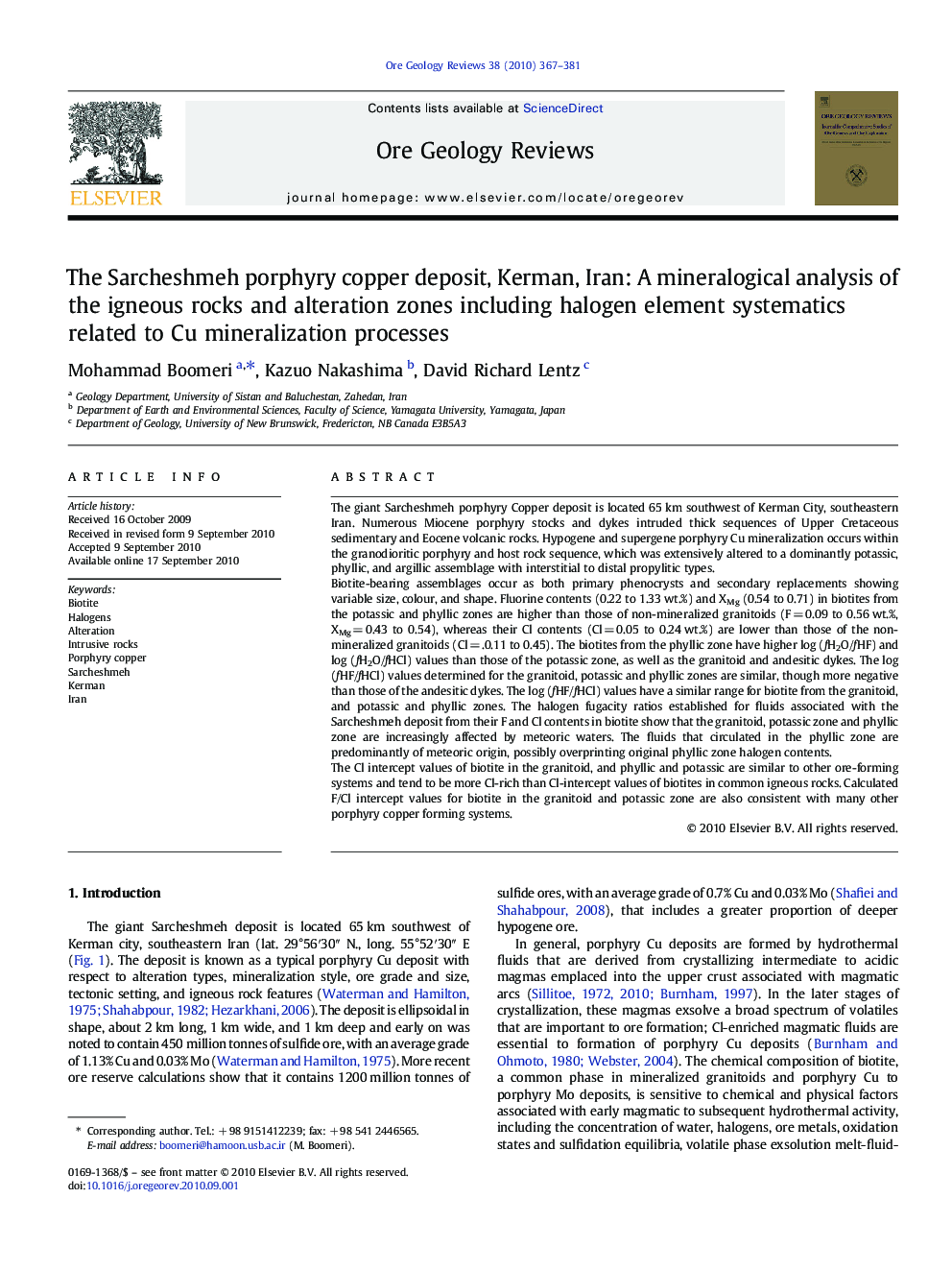| کد مقاله | کد نشریه | سال انتشار | مقاله انگلیسی | نسخه تمام متن |
|---|---|---|---|---|
| 4697765 | 1351900 | 2010 | 15 صفحه PDF | دانلود رایگان |

The giant Sarcheshmeh porphyry Copper deposit is located 65 km southwest of Kerman City, southeastern Iran. Numerous Miocene porphyry stocks and dykes intruded thick sequences of Upper Cretaceous sedimentary and Eocene volcanic rocks. Hypogene and supergene porphyry Cu mineralization occurs within the granodioritic porphyry and host rock sequence, which was extensively altered to a dominantly potassic, phyllic, and argillic assemblage with interstitial to distal propylitic types.Biotite-bearing assemblages occur as both primary phenocrysts and secondary replacements showing variable size, colour, and shape. Fluorine contents (0.22 to 1.33 wt.%) and XMg (0.54 to 0.71) in biotites from the potassic and phyllic zones are higher than those of non-mineralized granitoids (F = 0.09 to 0.56 wt.%, XMg = 0.43 to 0.54), whereas their Cl contents (Cl = 0.05 to 0.24 wt.%) are lower than those of the non-mineralized granitoids (Cl = .0.11 to 0.45). The biotites from the phyllic zone have higher log (fH2O/fHF) and log (fH2O/fHCl) values than those of the potassic zone, as well as the granitoid and andesitic dykes. The log (fHF/fHCl) values determined for the granitoid, potassic and phyllic zones are similar, though more negative than those of the andesitic dykes. The log (fHF/fHCl) values have a similar range for biotite from the granitoid, and potassic and phyllic zones. The halogen fugacity ratios established for fluids associated with the Sarcheshmeh deposit from their F and Cl contents in biotite show that the granitoid, potassic zone and phyllic zone are increasingly affected by meteoric waters. The fluids that circulated in the phyllic zone are predominantly of meteoric origin, possibly overprinting original phyllic zone halogen contents.The Cl intercept values of biotite in the granitoid, and phyllic and potassic are similar to other ore-forming systems and tend to be more Cl-rich than Cl-intercept values of biotites in common igneous rocks. Calculated F/Cl intercept values for biotite in the granitoid and potassic zone are also consistent with many other porphyry copper forming systems.
Research Highlights
► The halogen fugacity ratios established for the Sarcheshmeh deposit from F and Cl contents in biotite show that the granitoid, potassic zone and phyllic zone are increasingly affected by surficial waters during increased thermally driven incursion into this system.
► The IV(F) for biotite in the granitoid and alteration zones is similar to those of igneous rocks and porphyry copper ore deposits whereas IV(Cl) is similar to those of mineralized hydrothermal systems.
► Biotites from the Sarcheshmeh intrusive phases and alteration zones show a similar and narrow range of F/Cl intercept value corresponding to a Cl-rich system rather than F-rich system.
Journal: Ore Geology Reviews - Volume 38, Issue 4, December 2010, Pages 367–381